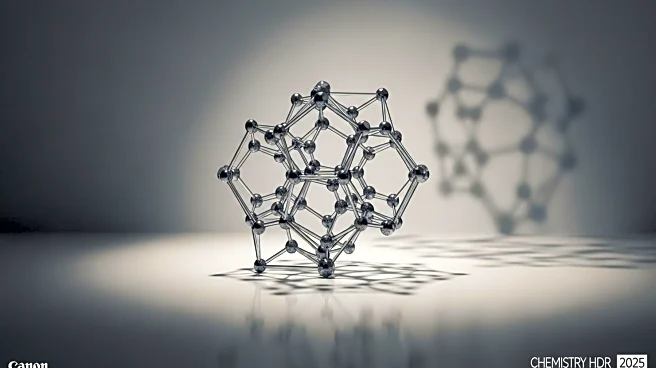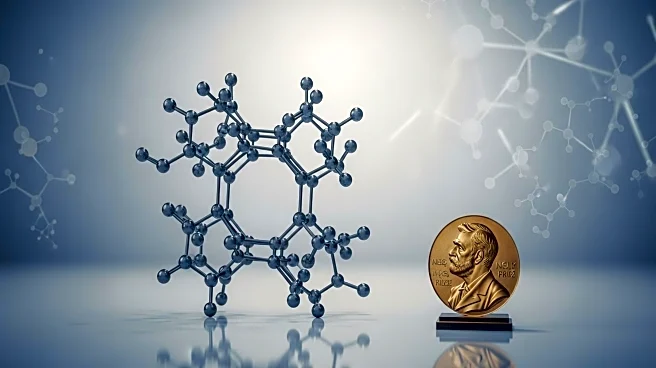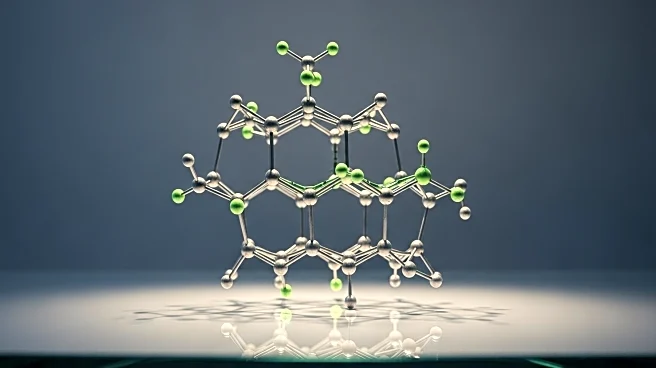What is the story about?
What's Happening?
The Royal Swedish Academy of Sciences has awarded the Nobel Prize in Chemistry 2025 to Susumu Kitagawa, Richard Robson, and Omar M. Yaghi for their development of metal-organic frameworks (MOFs). These molecular constructions feature large spaces that allow gases and chemicals to flow through, offering applications in water harvesting, carbon dioxide capture, and chemical catalysis. The laureates' work has led to the creation of numerous MOFs, each designed to capture and store specific substances, driving advancements in materials science and environmental technology.
Why It's Important?
The award highlights the transformative potential of MOFs in addressing environmental and industrial challenges. Their ability to capture carbon dioxide and other pollutants positions them as a critical technology in the fight against climate change. MOFs also offer innovative solutions for water purification and pollution control, contributing to sustainable development. The versatility of MOFs in catalyzing chemical reactions and conducting electricity opens up new possibilities for advancements in energy storage and conversion technologies.
What's Next?
The continued research and development of MOFs are expected to lead to further innovations in environmental and industrial applications. Companies are investing in the mass production and commercialization of MOFs, aiming to harness their benefits on a larger scale. Future research may focus on enhancing the stability and functionality of MOFs, exploring new applications in drug delivery, and expanding their use in renewable energy technologies.
Beyond the Headlines
The ethical implications of MOFs include their potential to reduce environmental pollution and contribute to sustainable development. However, the commercialization of MOFs must be managed carefully to ensure equitable access and avoid exacerbating existing inequalities. The long-term impact of MOFs on global industries and economies could be profound, potentially leading to shifts in energy production and consumption patterns.
AI Generated Content
Do you find this article useful?













